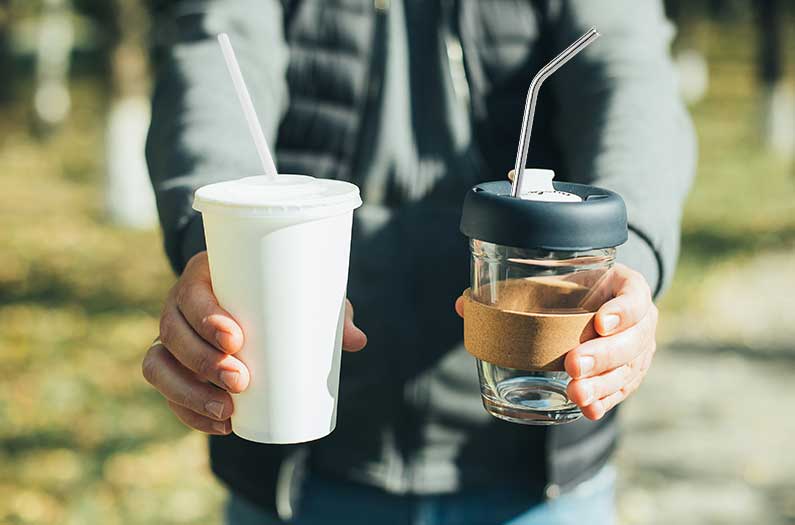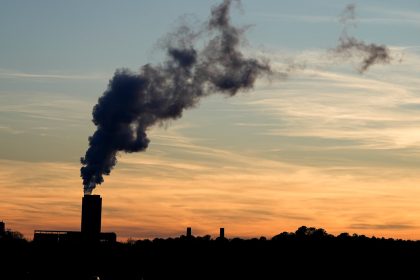Think Reusable Straws, Wraps, and Cups are Always Better for the Environment? Think Again.
The climate, water, and energy footprint of reusable products depends more on how they are used—than how they are made.

This article is by Prachi Patel and was originally published by Anthropocene magazine.
Single-use straws and forks, plastic sandwich bags and wraps, and disposable cups can all wreak havoc on the environment. Many consumers are switching from these products to reusable alternatives with the assumption that these products are have less environmental impact.
A new study shatters that assumption. Although they are made from more environmentally friendly materials, reusable products are not necessarily always more green since their impact depends on how they are used. Some of these products might actually be worse for the environment than disposable plastic ones, the analysis published in The International Journal of Life Cycle Assessment shows.
“This work pursues the misperception that reusable products are always better than single-use products, no matter what,” says Shelie Miller of the University of Michigan’s School for Environment and Sustainability. “In reality, reusables are generally better than single-use products, but they actually must be reused, and often reused a large number of times, to realize their environmental benefit.”
Bamboo straws and beeswax sandwich wraps have become popular kitchen items in recent years. They are often marketed as trendy must-haves for conscientious customers. But, says Miller, “reusable items are more durable than single-use items. Therefore, reusables consume more material and energy to make.”
So she and her colleague Hannah Fetner set out to compare the lifetime environmental impacts of both single-use plastics and reusable kitchenware products used commonly today. They calculated the global warming potential, water consumption, and non-renewable energy use of making four different types of products: drinking straws, sandwich storage bags and wraps, coffee cups, and forks. The researchers also considered different consumer washing and reuse behaviors, as well as local conditions such as the carbon intensity of different electricity grids. The goal was to assess the environmental breakeven point of reusables. That is, how many times a reusable product must be reused before its environmental footprint per use matches that of a single-use counterpart.
The researchers found that while the environmental impact of the disposable products was based on their manufacturing, that of reusable products depended heavily on their use and the frequency and method of washing. “It’s not the product itself that is inherently environmentally preferable, it’s how we choose to use it,” Miller says.
Two reusable items–silicone sandwich bags and beeswax wraps–never reached a breakeven point with their single-use counterparts. These items’ larger environmental impact stems from the water and energy used to manually wash them. Plastic zip-top bags, for instance, have such a small amount of plastic that dishwashing emissions tend to be greater, Miller says.
However, nine of the twelve reusable products broke even with their disposable counterparts after various numbers of uses, even when washed after every use. Reusable forks made of bamboo, plastic and metal, for instance, broke even after 12 uses. Ceramic coffee cups, on the other hand, had the lowest impact with the shortest environmental payback period.
The key takeaway is that consumer behavior and use patterns influence the ultimate environmental impact of reusable kitchenware products, write Miller and Fetner.
Consumers who want to reduce the impact of their kitchen items should try to find reusable products with the least impact, use the products for as long as possible and using best washing practices. “We don’t want to have a scenario where reusable products are treated as semi-disposable, with people buying new reusable travel mugs and water bottles every few months,” Miller says. “You can also reduce the impact of reusables by paying attention to washing emissions, either by washing items less frequently when it is reasonable to do so, making sure that your dishwasher is always run at full capacity, or reducing the amount of water you use if you wash by hand.”
In the end, it’s also important to remember that kitchenware products are a small part of one’ environmental footprint. Lowering emissions related to transportation, energy use, and food choices have a much bigger impact over time, they say.
Anthropocene magazine, published by Future Earth, gathers the worlds’ best minds to explore how we might create a Human Age that we actually want to live in.
Prachi Patel is a Pittsburgh-based freelance journalist who writes about energy, materials science, nanotechnology, biotechnology, and computing. Writes for Scientific American, IEEE Spectrum, Chemical & Engineering News, and MRS Bulletin. Find her at www.lekh.org.
Source: Hannah Fetner & Shelie A. Miller. Environmental payback periods of reusable alternatives to single-use plastic kitchenware products. The International Journal of Life Cycle Assessment, 2021.

























